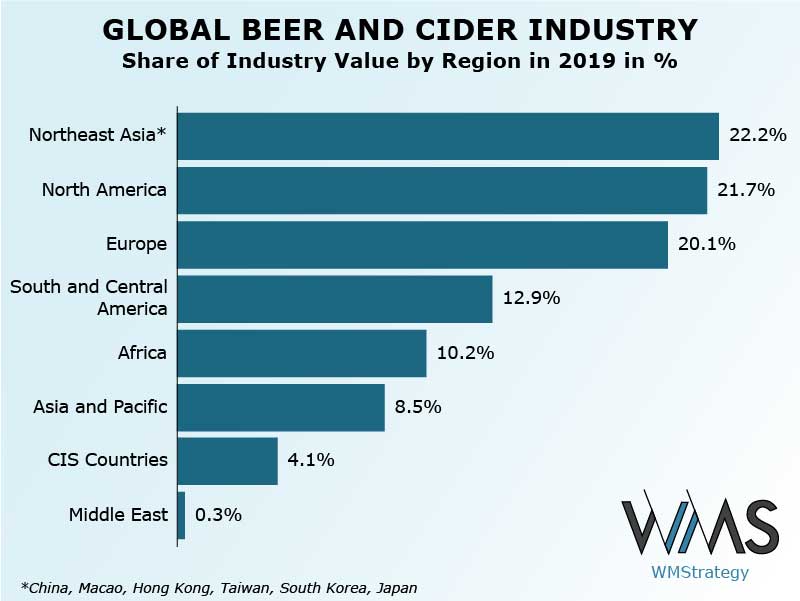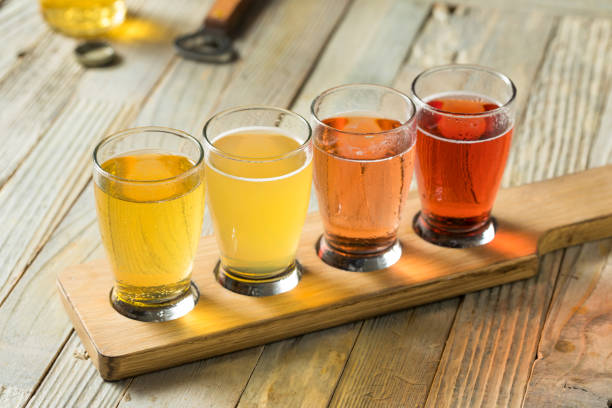Craft cider is the fastest-growing segment of the North American beverage industry, and that’s no surprise. People are increasingly looking for new ways to enjoy their favorite drinks, and craft ciders offer an abundance of variety. They’re also easy to find: they can be found at bars, restaurants, and grocery stores across the country.
Craft cider has been on a steady rise in recent years, as more and more people are learning about the wide variety of flavors that come from apples.
Craft cider has been on a steady rise in recent years, as more and more people are learning about the wide variety of flavors that come from apples. Cider has been around for centuries and its history in the United States dates back to colonial times. Craft cider differs from traditional cider because it uses only fresh pressed juice from apples grown on small, family farms within 50 miles of where they’re made (usually right at the brewery). Craft ciders tend to be lower in alcohol content than traditional ciders as well but still pack a punch with complex flavors like hibiscus or blackberry liqueur added during fermentation by local fruit growers or other breweries who have partnered with craft cideries like ours!
So whether you’re looking for something light and refreshing or full-bodied with bold fruit notes–you’ll find something here at our taproom!
The growth of craft cideries has had a positive impact on the general market for cider.
As craft cideries have grown in number and popularity, they’ve had a positive impact on the general market for cider.
The growth of craft cideries has brought new flavors to the market and helped diversify the industry.
Craft ciders can be made in a variety of styles, some with an emphasis on unique flavors while others focus on the simplicity of traditional recipes.
The craft cider industry has exploded in recent years, offering consumers a variety of styles and flavors. Some ciders are made with unique flavors that you wouldn’t find in traditional ciders while others focus on the simplicity of traditional recipes.
Craft Cider: A Definition
- Craft cider is defined as a fermented alcoholic beverage made from apples or pears, apple juice concentrate and other natural ingredients such as spices or honey that may include water; no preservatives can be added except for sulfites at levels less than 10 parts per million (ppm). It must be made by an individual who produces no more than 200 gallons per year or less than 2% alcohol by volume (ABV) per gallon if bottled at 6% ABV or higher.*
Cider has played an important role in many cultures throughout history and continues to do so today.
Cider has played an important role in many cultures throughout history and continues to do so today. It’s been made for thousands of years, with native Americans making cider from apples centuries before Europeans arrived on the continent. Cider is still popular in countries such as France, Spain and England; it’s also a popular choice among craft beer drinkers in the U.S., who often enjoy pairing it with food or using it as an alternative to beer or wine at dinner parties or other social gatherings.
We think of cider as something new because it hasn’t always been easy for us to find locally-made options here at home–but now there are more than 100 small breweries specializing in cider throughout America!
The production process for cider varies greatly depending on how it is made and what ingredients are used during fermentation.
Cider is made from apples, but the process of making cider varies greatly based on how it is made and what ingredients are used during fermentation.
The most common method for making cider is by pressing fresh apples into juice and fermenting that juice in large tanks or barrels. This method has been popularized by large craft breweries such as Anheuser-Busch InBev (AB InBev) and MillerCoors, who have been producing their own craft ciders since 2017. These big players can afford to use high-quality fruit from all over the world, which results in some very tasty products like Stella Artois Cidre Coeur Brut ($13) or Shock Top Belgian White Apple Wheat Beer with Honey ($7).
Other brewers prefer to blend wine or beer with apple juice as opposed to using freshly pressed apples themselves; this process allows them greater flexibility when creating unique flavor profiles without having to rely solely on locally sourced ingredients like their competitors do! For example: Blue Moon Belgian White Ale ($6), which contains wheat beer brewed with orange peel while also containing time-honored Belgian brewing traditions such as spicing up your brews with coriander seeds before adding hops during fermentation (which gives beers their distinctive bitterness).
You should try a different type of cider at your next drink night!
If you’re looking for a new drink to try, check out your local cideries. They make some delicious products that are quickly gaining popularity and can be found in almost every state. Cider is also one of the first alcoholic beverages mentioned in the Bible!
If you’re already a fan of cider then this article will give you some new ideas on what to try next time you’re at the store or planning an event with friends.
Conclusion
I think we can all agree that the rise of craft cideries is a good thing for the industry as a whole. The more people who get involved and try different types of cider, the more likely they are to become regular consumers. This means more sales for producers and retailers alike!




